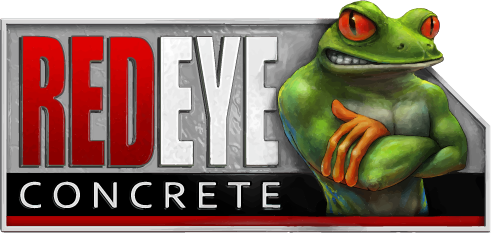General Maintenance Guidelines for Floor Coating Systems
Floors cannot be cleaned too often. Although a coated floor will typically ease maintenance and reduce maintenance costs versus an uncoated floor, cleaning maintenance is still required. To maximize the lifespan of your investment, routine maintenance procedures and a schedule is crucial for traction, gloss retention, aesthetics and protective durability of your floor. The environment, volume of soilage occurring, type and extent of traffic, as well as exposure to harsh chemicals, will be the ultimate determining factors in the frequency of cleaning maintenance.
Daily Maintenance: At a minimum, dust mopping should occur at least once daily or each shift. With increased soilage, the frequency of cleaning must increase accordingly. Large areas and those with abrasive particulate, such as metal shavings, sand, etc. may necessitate the use of larger sweeping equipment to aid in removal of dust and debris. Spot cleaning of liquid spills should occur when noticed as sweeping and dust mopping and will not remove soils attached to the surface of the coating.
Sweeping: Never use stiff bristle brushes/brooms to sweep a floor.
Traffic over dust and debris acts like sandpaper scratching the surface thus reducing the sheen of the coating finish. Frequent sweeping will aid in keeping the appropriate appearance of the floor longer. Use only dust mops, soft exploded tip nylon bristle brooms or soft bristle brushes on mechanical sweeping equipment to sweep floors to avoid scratching or scuffing the coating surface.
Cleaning: Small areas may be cleaned with a mop while larger areas should utilize an auto-scrubber for more efficient cleaning and greater productivity.
Mopping: Change the cleaning solution frequently in order to effectively remove soils and debris as well as to avoid spreading certain soils, chemicals, fungus and/or bacteria to uncontaminated floor areas. Ensure the floor has no remaining soils or detergent residue to lessen slip-fall hazards.
Auto-Scrubbing: Use only soft, nylon bristle brushes to clean a coated floor to avoid premature wear and dulling of the finish. All other brushes will damage the finish of a coating system.
Spot Cleaning: Small areas may require a more aggressive cleaner on occasion and can be accomplished with a trigger sprayer and a mop in many cases.
Detergents: Always utilize the least aggressive detergent at the weekend concentration required to remove soils from the surface while ensuring thorough clean water rinsing. General maintenance should utilize a neutral cleaner following manufacturers guideline for use and mixing. Excessively harsh or high concentrated cleaners of any kind may be more aggressive than the manufacturer intended causing damage to the coating or equipment that comes in contact with the solution. For light soilage and general-purpose cleaning, start with a neutral cleaner such as Turtle Tuff Coatings Neutra Cleaner or similar. Oil, grease, etc. may be removed using Turtle Tuff Coatings Oil Cleaner. For all other detergents, always spot test the detergent on all intended floor areas to determine suitability and if damage may occur.
Cleaning Frequency: Floors should be mopped/scrubbed at least weekly with a neutral cleaner or an appropriate floor cleaning solution for the environment. Areas with exposure to oils, regular liquid spills, food related soilage, heavy traffic environments, etc. should eb scrubbed more frequently, such as daily, every shift or may have regulatory obligations regarding cleaning procedures to follow. More aggressive or specialty cleaners may be necessary which should be checked to determine the cleaner’s compatibility with floor coating systems, surrounding equipment, etc. with the detergent manufacturer to avoid damage.
Note:
Too heavily concentrated cleaners (not diluted enough) may leave a residue which will attract soils causing the floor to become slippery and appear dirty faster than using the appropriate concentration.
Never use simple green All Purpose Cleaner or similar products over a floor coating system due to potential residue that may cause a slip-fall hazard especially when the floor is wet.
Spills: Spills of any kind are a safety hazard and should be cleaned up immediately upon discovery. Always follow local and state regulations regarding disposal or regulated chemicals, oils, acids and caustic liquids. Floor coatings protect the floor from damage to a chemical over a period of time which varies based on the individual product as well as the chemical but damage may occur if certain liquids remain on the surface too long or are allowed to dry, which may cause etching , staining, weakening or other types of damage to the coating system. Please reference the chemical resistance chart on the product data of the final layer of the floor system or contact Smith Pain Products with questions pertaining to chemical exposure questions.
Scars, Chips and other Surface Damage: Floor coatings provide a protective surface over a floor. The wear surface, topcoat, is used to protect the floor coating system as a sacrificial layer to protect the system beneath the topcoat. Although these products are extremely durable, sharp edges and blunt objects will damage a coating with enough force behind the object causing the damage. Do not drag, slide or push pallets, heavy equipment, etc. across a floor to avoid scaring the coating. Surface damage should be repaired quickly. A quick, temporary fix can be to use clear nail polish until a touch up kit of the appropriate coating can be obtained for a more long-term solution. Significant surface damage may necessitate sanding and recoating the topcoat.
